Saxenda (5 Pens)
Original price was: $800.00.$758.00Current price is: $758.00.
Description
Buy Saxenda (Liraglutide) Online for Chronic weight management
Saxenda (5 Pens) or (Liraglutide) is an FDA-approved prescription injection. Moreover used for chronic weight management and weight-related medical issues. Basically it contains Liraglutide, a GLP-1 agonist, for subcutaneous use only. While Saxenda contains 18 mg of Liraglutide in 3 ml of solution and is available in dosages ranging from 0.6 to 3.0 mg. Notwithstanding they do not start, stop, or change the medication dosage without consulting your doctor. While using it as prescribed by your doctor; discussing any concerns and queries regarding the medication with a healthcare provider before using or when you buy Saxenda online Canada is essential. Saxenda (5 Pens)
Archievements with Saxenda Liraglutide
Liraglutide
Using a Saxenda 5 Pens
Product Overview With Liraglutide
Saxenda (Liraglutide) is an FDA-approved weight loss prescription injection pen. Moreover designed for long-term weight management in adults and children who are obese or overweight. And have weight-related medical problems. Basically it contains Liraglutide, a GLP-1 agonist, and is intended for subcutaneous use only. Meanwhile Saxenda comes in a prefilled injection pen with 18 mg of Liraglutide in 3 ml solution. It is available in dosages ranging from 0.6 to 3.0 mg.
Liraglutide as a body weight solution :
Meanwhile to use Saxenda, start with an initial dose of 0.6 mg once daily for the first week, then increase the dosage weekly until the maintenance dose of 3.0 mg once daily. Do not start, stop, or change the dosage without consulting your healthcare provider. Moreover Saxenda is approved for use in obese adults with a BMI ≥ 30, overweight adults with a BMI ≥ 27, and overweight adults with weight-related medical conditions. Saxenda is approved for use in pediatric patients with a weight of over 60 kg or 132 pounds and a BMI ≥ 30. Common side effects may include gastrointestinal issues, headaches, and low blood sugar. Pregnant or breastfeeding women should not use Saxenda. Store Saxenda in the refrigerator and use within 28 days at room temperature. Consult your healthcare provider for personalized guidance and to discuss any concerns before using Saxenda.
Uses of Saxenda Pens
Saxenda is used for:
- Weight Loss
- Weight Management
How to Use Saxenda 5 pens?
Dosage
Saxenda comes in the form of a solution in prefilled pens. Each time you use the medication, you can change the pen to give you a dose of 0.6 mg, 1.2 mg, 1.8 mg, 2.4 mg, or 3 mg. Saxenda (5 Pens)
It comes in a strength of:
- Saxenda 6 mg prefilled pen
Recommended Dosage of Saxenda
The common recommended dosages are:
- Week 1: 0.6 mg once daily
- Week 2: 1.2 mg once daily
- Week 3: 1.8 mg once daily
- Week 4: 2.4 mg once daily
- After week 5: 3 milligrams once daily
If you have serious side effects from the medications after an increase in dosage, contact your doctor or pharmacists immediately. They might delay the increase until next week, or the side effects disappear. Saxenda (5 Pens)
[Note: Remember these recommendations may vary depending on person to person. Discuss it with your doctor, and they’ll customize your dosage accordingly.]
How to Take It?
- Saxenda is available as a prefilled, multi-dose pen with injectable solution of 0.6 mg, 1.2 mg, 1.8 mg, 2.4 mg, and 3 mg.
- The injection is subcutaneous, meaning that the drug is injected just under the skin of the lower abdomen, thighs, or upper arm.
- Once you receive your Saxenda prefilled injection pen, your doctor or healthcare provider will show you how to use it.
- They will also explain to you how to give yourself the injection and the best places to inject it.
- The instructions are also available on the manufacturer’s website or for use with Saxenda, the medication guide, and the patient’s instructions.
- You can inject the Saxenda pen into your front thigh, lower stomach, or upper arm.
- Do not inject into a vein or muscle.
- To avoid any reaction or lumps in your skin, rotate the injection spot each time you inject the dose.
- If you have questions or concerns about using Saxenda, talk with your doctor or health care provider.
[Note: Your doctor will decide the right amount for you based on your condition, following guidelines and studies on the drug. They’ll adjust it as needed over time.]
How Does Saxenda 5 Pen Work ?
Saxenda works by acting on the receptors in your brain that are responsible for controlling appetite and reducing calorie intake. It mimics GLP-1, the hormone released by your stomach after eating. The hormone increases the feelings of fullness after eating and regulates blood sugar levels. Saxenda is approved for use in adults who have a Body Mass Index ≥ 27 or have medical conditions associated with weight, like non-insulin-dependent diabetes mellitus, hypertension, and dyslipidemia.
Important Safety Information
Side Effects
Mild side effects of Saxenda may include:
- Diarrhea
- Vomiting
- Abdominal pain
- Bloating
- Upset stomach
- Constipation
- Fatigue or low-energy
- Nausea
- Headache
- Mild allergic reactions
- Dizziness
- Fever
Mild side effects of such drugs go away in a few days or a couple of weeks. But if they are persistent or bothersome, contact your doctor or care provider.
Serious side effects of Saxenda may include:
- Inflammation in your pancreas
- Fast or irregular heartbeat
- Low blood sugar/ hyperglycemia
- Chronic Kidney disease
- Gallbladder disease
- Mental health issues
- Mood disorders
- Risk of thyroid cancer
- Serious allergic reaction
Remember that side effects may be caused by other factors, such as age. While the health conditions, and medications you might take to treat them. Your doctor or pharmacist can help you identify possible side effects of Saxenda. They can also help you reduce side effects.
[Note: Remember, this list may not cover all possible side effects. Always consult with your healthcare giver for medical advice about side effects.]
Warnings
Liraglutide, by the brand name of Victoza, is used for diabetes management. It is important to note that you should not use Victoza and Saxenda together. You may not use Saxenda if you have the following medical conditions:
- If you are pregnant or planning to get pregnant
- If you have multiple tumors in your glands
- If you have a personal or family history of thyroid tumors or thyroid cancer
- If you have insulin-dependent diabetes
- If you have the life-threatening condition of diabetic ketoacidosis
Boxed Warnings
Saxenda has a boxed warning about the risk of thyroid cancer. If you have a personal or family history of thyroid cancer or tumor, let your doctor know and discuss any concerns or questions you may have before starting using Saxenda. Suppose you or anyone in your immediate family has ever had a rare kind of thyroid cancer called medullary thyroid cancer. In that case, your doctor won’t prescribe Saxenda if you have an inherited condition of multiple endocrine neoplasia syndrome type 2 or MEN-2.
Precautions
- Hypersensitivity: Before starting treatment with Saxenda, let your doctor know if you are allergic to it or any of its ingredients. You can also tell them if you have any other allergies, as this medication may contain inactive ingredients that can cause such unwanted side effects. Consult your doctor or pharmacist for more information.
- Medical History: Discuss your medical conditions with your doctors, especially if you have chronic kidney disease, gallbladder disease, pancreatitis, mental issues or mood disorders, certain stomach or intestinal disorders, or if you face problems in properly digesting food. Before having surgery, let your doctor know about your medical conditions and the medicines you take for treatment, including prescription drugs, herbal supplements, or non-prescription drugs.
- Diabetes Mellitus: If you have diabetes, this medication can affect your blood sugar levels. Regularly check your blood glucose and share the results with your doctor to avoid complications. They will closely monitor your blood sugar levels while you are on treatment with Saxenda. Your doctor may instruct you to change your diabetes medication, exercise routine, and diet.
Other Important Precautions
- This medication is not for use by pregnant women as it may cause fetal harm, so let your doctor know if you think you may be pregnant or are planning to become pregnant before starting taking Saxenda.
- It is still not known if this medication affects breast milk. However, consult your doctor before breastfeeding. They are most likely to pause this medication while breastfeeding and resume when they finish breastfeeding.
Missed Dose
- If you miss a dose, you can inject it as soon as you remember or skip it and inject the next dose at the scheduled time.
- Do not take an extra dose or increase your dosage to compensate for your forgotten dose.
- If you miss three or more doses in a row, talk to your doctor to know how to restart your medication.
[Note: If you have missed a dose of your medication and are unsure about when to take the next one, immediately consult your doctor or pharmacist.]
Overdose
Call your doctor if you think you’ve used too much Saxenda or seek emergency medical attention. You can also call the American Association of Poison Control Centers Helpline or reach out using their online resource. If you have severe symptoms, immediately call 911 or your local emergency number. You may also head to the nearest emergency room. Symptoms of an overdose may include:
- Vomiting
- Nausea
- Diarrhea
- Low blood sugar
[Note: If you consumed more than the recommended dose, get medical help right away or call the Poison Help line at 1-800-222-1222.]
Storage
- You should store the Saxenda injection in the refrigerator till you’re ready to use it.
- Do not freeze it. Don’t use the pen if it is frozen.
- Once you’ve started using Saxenda, you can keep it in the refrigerator or at room temperature.
- It is good for use for up to 28 days.
- Protect the pen from exposure to sunlight or heat.
- After you inject the pen every time, remove the needle and replace the cap on the pen.
- Do not store the injection pen with a needle still attached.
- Keep the injection out of reach of children and pets.
- Dispose of the pen safely in a sharp, non-reusable disposable container after 30 days of use, even if medication is left in the pen. Saxenda (5 Pens)
[Note: Discuss with your healthcare professional about the proper disposal of any unused medicine and any questions you may have regarding its storage.]
Saxenda Interactions
Interaction with certain drugs can affect how Saxenda works, and it may also increase your risk of side effects. Share the list of all products you use, including prescription drugs, herbal supplements, or non-prescription drugs you may be taking with Saxenda (5 Pens) your doctor or pharmacist. Sharing this interaction may help avoid interaction of your existing products with Saxenda. Only stop, change, or start any medication after consulting the doctor. Possible interactions with this medication may include:
- Diabetes medications like insulin lispro, insulin glargine, and insulin detemir
- Sulfonylureas like glyburide, glipizide, and glimepiride.
- Other products that may contain GLP-1 receptor agonists like semaglutide, dulaglutide and liraglutide
- Medicines that are similar to Saxenda, like Victoza
- Drugs used for diabetic management include exenatide and dulaglutide.
- Antidepressants like fluoxetine (Prozac), phenelzine and selegiline.
- bismuth subsalicylate
- Clarithromycin
You may also interact with other substances like if you drink, smoke, or use illegal substances, then that may also affect the way this drug works. Contact your healthcare provider if you have any doubts regarding interaction with other substances.
[Note: This isn’t a complete list, and there could be other drugs that interact with Saxenda. Make sure to tell your doctor about any prescription, over-the-counter medicines, and herbal products you’re taking.]
Saxenda Alternatives
- Xenical
- Orlistat
- Bupropion
- Wegovy
- PhenQ
- Zotrim
- Berbaprime
- Phentermine
- Topamax (topiramate)
- Mysimba (naltrexone and bupropion)
- Alli (orlistat)
- Ozempic (semaglutide)
- Qsymia (phentermine and topiramate)
- Victoza (liraglutide)
- Trulicity (dulaglutide)
- Contrave (naltrexone and bupropion)
- Mounjaro (tirzepatide)
- Zepbound (tirzepatide)
[Note: Your doctor will choose what’s best for you. Don’t use any of these alternative medications without consulting your healthcare provider. Taking them by yourself may cause serious side effects.]
Quick Facts
- How to Use the Saxenda Injection for Weight Loss?
- Do Weight Loss Drugs Like Saxenda Cause Suicidal Thoughts?
- What Foods to Avoid While Taking Saxenda in 2024?
- How does Saxenda skyrocket Weight Loss in 2024?
Frequently Asked Questions
How can I avoid the side effects of Saxenda?
The most common side effects of Saxenda are nausea, diarrhea, headache, and vomiting. o help your body adjust to the medication, your healthcare provider will start your medication at a low level and gradually increase it weekly. Follow the tips if side effects persist with Saxenda (5 Pens);
- Eat the meal slowly
- Intake small meals
- Avoid spicy foods
- Drink light, clear liquids, like water and iced tea
- Don’t lie down immediately after a meal
Can you go higher than 3 mg on Saxenda?
Moreover when you begin Saxenda treatment, your doctor will prescribe a low dose of the medication to start. Over time, this dose Saxenda (5 Pens) will be increased gradually, usually on a weekly basis. The maximum dosage of Saxenda that can be taken in a day is 3 milligrams. For adults seeking weight loss or weight management, the initial dosage recommended is 0.6 milligrams per day. It’s important to follow your doctor’s instructions closely regarding dosage adjustments and to discuss any concerns or questions you may have about your treatment plan.
What is the dosing schedule?
The dosing schedule begins with a daily intake of 0.6 mg for one week. Following this initial period, the dosage should be gradually increased each week until reaching the prescribed 3 mg dose. Strict adherence to the healthcare provider’s instructions during this escalation is essential. In cases where the maximum dose of 3 mg is not well-tolerated, teenagers may be advised by their healthcare provider to decrease their daily intake to 2.4 mg. Moreover this adjustment aims to ensure optimal tolerance and effectiveness of the medication. Always consult with your healthcare provider for personalized guidance and adjustments to your dosing regimen.
Is it ok to switch from Saxenda to Ozempic?
Switching from Saxenda to Ozempic may not be recommended because they are not seen as interchangeable medications. However, if you have been using Ozempic for weight loss under exceptional circumstances but encounter difficulty obtaining it, your healthcare provider might consider prescribing Saxenda as an alternative option. Basically it’s important to discuss any medication changes with your healthcare provider . While this is to ensure the most suitable treatment plan for you.

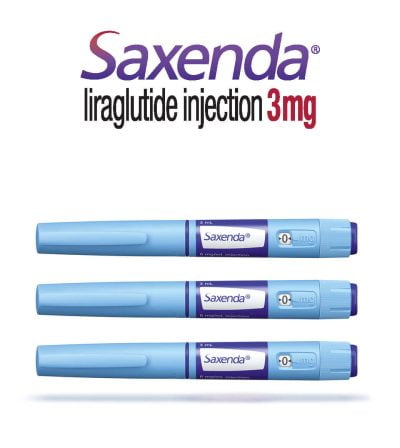
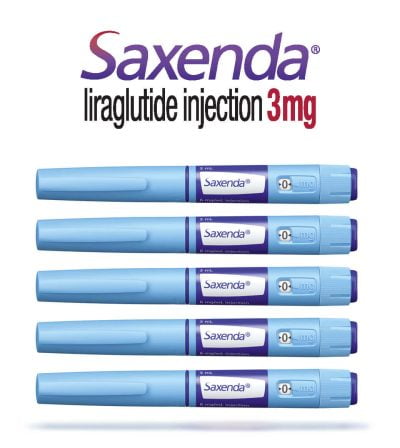
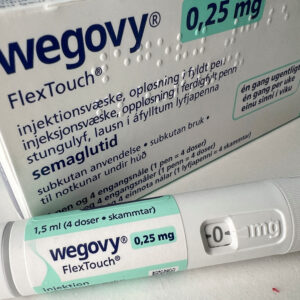
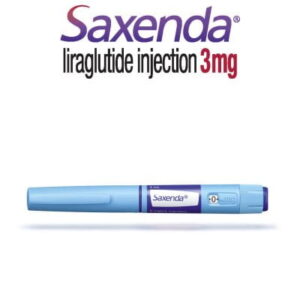
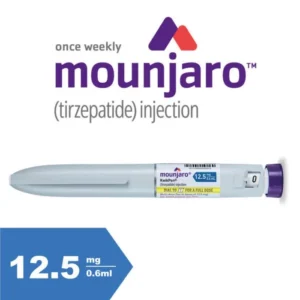
Reviews
There are no reviews yet.